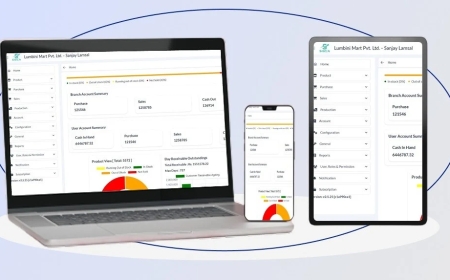How to Launch a Taxi Booking App Like Lyft in the USA?
Launch a taxi booking app like Lyft in the USA with key steps: market research, app development, legal setup, and promotion.

The taxi booking market in the USA has transformed transportation for millions of people. Apps like Lyft have revolutionized the way riders connect with drivers, offering convenience and speed. If you want to build a taxi booking app similar to Lyft, this article explains the essential steps and factors to consider. From initial planning to development and launch, you will learn what it takes to create a competitive app.
Why Build a Taxi Booking App?
Taxi booking apps meet the growing demand for quick, affordable, and reliable transportation. Many people rely on smartphones to get rides without waiting on the street or calling dispatchers. A well-built app can attract riders, provide income for drivers, and generate steady revenue for your business.
By launching an app tailored to your target market in the USA, you can tap into this ongoing demand. The key is to offer a user-friendly interface, efficient matching between riders and drivers, and features that enhance safety and trust.
Key Features Your Taxi Booking App Needs
To compete with apps like Lyft, your app must include essential features for both riders and drivers. Below are the must-have elements:
For Riders
-
Easy Sign-up and Login: Allow riders to register quickly using phone numbers or social media accounts.
-
Ride Booking: Riders should enter pickup and drop-off locations effortlessly.
-
Real-Time GPS Tracking: Show the drivers location and estimated arrival time.
-
Fare Estimates: Provide upfront cost calculations before booking.
-
Multiple Payment Options: Include credit cards, digital wallets, and cash.
-
Ride History and Receipts: Let users view past trips and download receipts.
-
Ratings and Reviews: Allow riders to rate drivers and leave feedback.
For Drivers
-
Driver Registration and Verification: A smooth onboarding process with ID verification.
-
Ride Requests: Notify drivers instantly when a nearby ride request appears.
-
Navigation: Provide in-app GPS for the fastest routes.
-
Earnings Dashboard: Show completed rides and daily earnings.
-
Availability Toggle: Enable drivers to switch between online and offline status.
-
Ratings and Reviews: Allow drivers to rate passengers for safety.
Admin Panel Features
-
User Management: Admins control riders and drivers.
-
Ride Management: Monitor ongoing and completed trips.
-
Payment Management: Track transactions and commissions.
-
Analytics and Reporting: Access detailed performance data.
-
Customer Support: Manage inquiries and resolve issues.
Steps to Build a Taxi Booking App
To create a successful taxi booking app, follow these essential steps that cover everything from research to launch.
1. Research the Market and Legal Requirements
Start by studying the taxi app market in the USA. Analyze competitors like Lyft, Uber, and local services. Pay attention to their pricing models, features, and customer feedback. This helps shape your apps unique value.
Next, check state and federal transportation regulations. You must comply with licensing, insurance, and safety laws for ride-hailing businesses. Hiring a legal advisor will ensure you meet all requirements before launch.
2. Define Your Business Model
Decide how you will generate revenue. Common models include:
-
Commission Model: Take a percentage from each ride fare.
-
Subscription Model: Charge drivers or riders a monthly fee.
-
Surge Pricing: Increase prices during high demand.
-
Advertisement: Display ads within the app.
Choose the model that fits your market strategy and budget.
3. Choose the Right Technology Stack
Selecting a reliable technology stack affects your apps performance and scalability. Popular choices include:
-
Frontend: React Native or Flutter for cross-platform apps.
-
Backend: Node.js, Python (Django), or Ruby on Rails.
-
Database: PostgreSQL or MongoDB for managing data.
-
Real-time Communication: WebSocket or Firebase for instant updates.
-
Maps and Navigation: Google Maps API or Mapbox.
4. Design User-Friendly UI/UX
A clean and intuitive design attracts users and keeps them engaged. Focus on easy navigation, clear icons, and quick booking flows. Consider mobile-first design since most users book rides via smartphones.
Create wireframes and prototypes to test the user journey before development. Collect feedback and make adjustments.
5. Develop the App
Start development in phases:
-
MVP (Minimum Viable Product): Build core features like booking, tracking, payments, and user profiles.
-
Testing: Conduct rigorous testing to fix bugs and improve stability.
-
Driver and Rider Apps: Develop separate interfaces tailored to their needs.
-
Admin Panel: Build tools for managing users and rides.
Use Agile development to release updates frequently based on user feedback.
6. Implement Security Measures
Security is crucial for protecting user data and payments. Incorporate:
-
End-to-end encryption for personal information.
-
Secure payment gateways with PCI compliance.
-
Two-factor authentication for login.
-
Driver background checks to ensure passenger safety.
7. Launch and Market Your App
Once ready, launch your app on iOS and Android platforms. Promote it through digital marketing channels such as:
-
Social media ads targeting local areas.
-
Partnerships with taxi companies or drivers.
-
Referral programs rewarding users for inviting friends.
-
Local events and sponsorships.
Track your apps performance regularly to identify areas for improvement.
Challenges You Will Face and How to Overcome Them
Launching a taxi booking app comes with obstacles, but knowing them upfront helps you prepare and succeed.
Competition
Many ride-hailing apps exist in the USA, making it a crowded market. To stand out, focus on customer service, pricing strategies, and adding features that riders value most.
Driver Acquisition
Getting enough drivers is vital for quick pickups. Offer attractive commissions and incentives, and provide easy onboarding to recruit drivers fast.
Regulatory Compliance
Navigating complex transportation laws requires thorough research and ongoing monitoring. Stay updated with legal changes to avoid penalties.
Technical Issues
App crashes, slow loading, or GPS inaccuracies can frustrate users. Prioritize quality assurance and maintain a responsive support team to resolve issues quickly.
Final Thoughts
Building a taxi booking app like Lyft in the USA involves careful planning, solid technology, and continuous improvement. Focus on delivering a smooth user experience and maintaining trust between riders and drivers. With the right approach, your app can become a trusted part of everyday transportation in your target region.





































